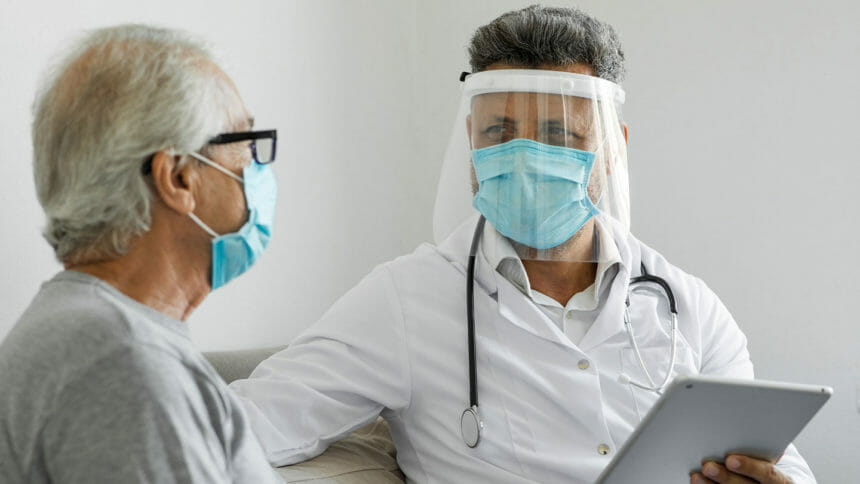
The Centers for Disease Control and Prevention has eased COVID-19 guidance, emphasizing a continued focus on protecting at-risk individuals, including the elderly and ill, from infection and poor outcomes.
Vaccine and infection-derived immunity plus clinical interventions have lowered public risk of severe disease, the CDC said in a Thursday announcement. In key changes to public guidance, the agency has relaxed distancing measures, loosened rules for quarantine after exposure to SARS-CoV-2 and relaxed screening procedures for people who have no symptoms. Members of the public who test positive for COVID-19 are encouraged to remain home for five days, wear a high-quality mask for 10 days while indoors and re-test for COVID-19 on day five.
Reducing severe illness
But as transmission of the virus continues, with 400 deaths per day nationally, “the current focus on reducing medically significant illness, death and healthcare system strain are appropriate and achievable aims,” CDC scientist Greta Massetti, PhD, MPH, wrote in the Morbidity and Mortality Weekly Report.
For example, the CDC has made a case for significantly loosening testing requirements in schools, but widespread screening of asymptomatic persons with no known exposure may still be considered for “high-risk congregate settings, such as long-term care facilities, homeless shelters and correctional facilities,” Massetti wrote.
Organizations should consider the risk to their population when deciding the level of prevention strategies needed to supplement disease control efforts, she added.
Congregate settings guidance
Among the considerations for congregate settings, Massetti recommended that vulnerable individuals stay up-to-date with vaccinations and to continue to make use of masks or respirators, preventive drugs and antivirals as appropriate. When making infection prevention and control decisions, organizations should continue to look to community infection rates, she added.
“At medium and high COVID-19 community levels, persons at high risk for severe illness and their contacts should consider wearing well-fitting masks or respirators that provide more protection to the wearer because of better filtration and fit to reduce exposure and infection risk,” Massetti wrote.
Individuals who are regularly in contact with people at high risk “should consider self-testing to detect infection before contact at medium and high COVID-19 community levels,” she said.
Nursing home guidelines unchanged
As of press time, corresponding updates that directly address healthcare settings remained under CDC review, and new guidance has yet to come for federally supported nursing homes. But with the virus less of a threat and better controlled in long-term care settings, advocates are pushing for a change.
The American Health Care Association/National Center for Assisted Living in July asked CDC Director Rochelle Walensky to change its nursing home COVID-19 infection control and prevention requirements to reflect the new pandemic conditions. Among others, these included deemphasizing visitor screening and discontinuing a daily temperature check of all residents in favor of following facilities’ change-of-condition processes for evaluating residents.
In addition, the organization suggested reducing the use of PPE and source control in certain situations in these settings. It also asked for shorter quarantines for residents and staff to match that of community guidelines, and that flexibilities be allowed for patient placement.
Related articles:
U.S. COVID-19 strategy must veer to protecting the vulnerable, experts say




